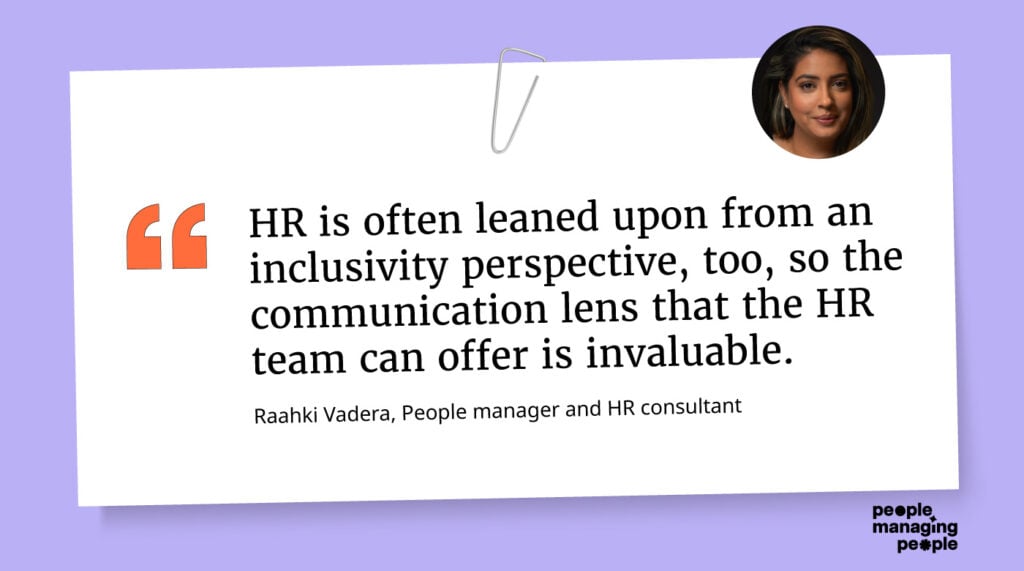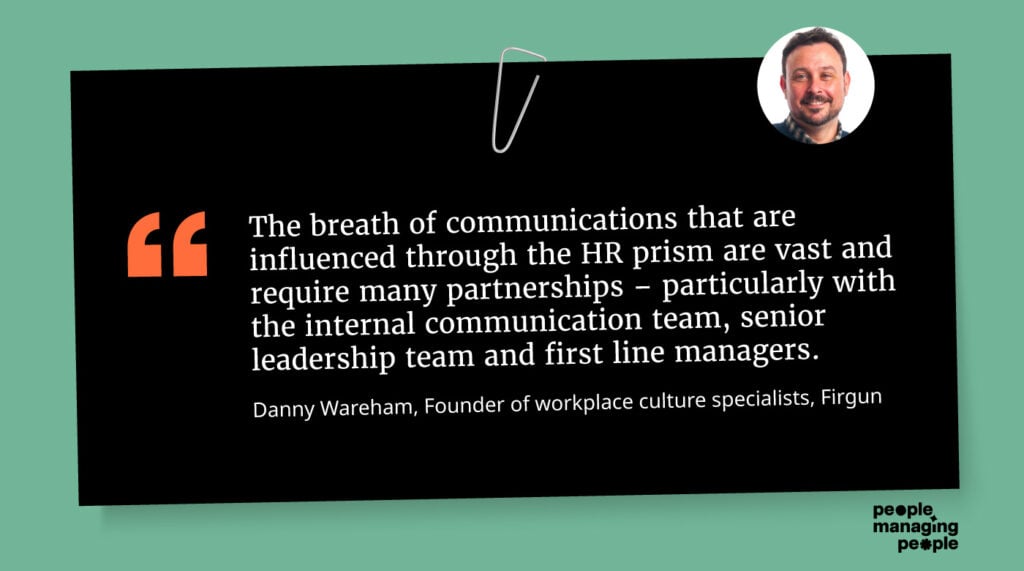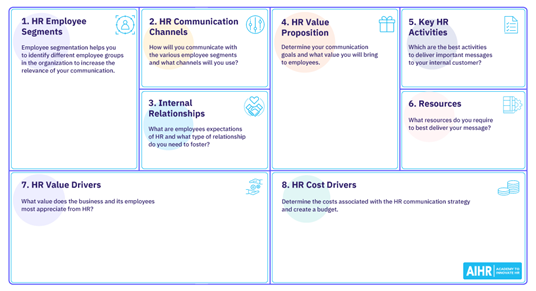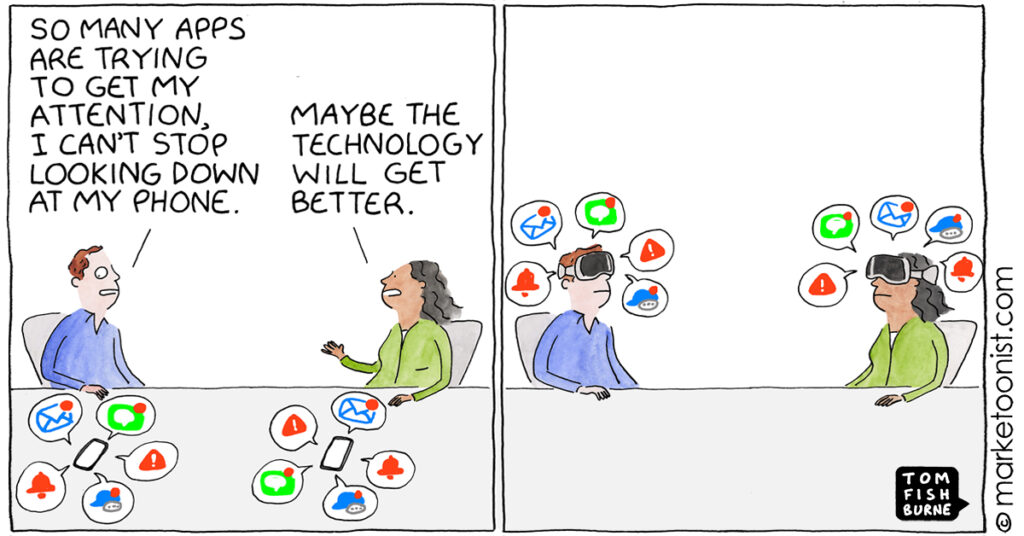Being able to communicate effectively is consistently listed as one of the key HR skills.
But what is HR communication, why is it so important to the organization, and how can you communicate effectively as an HR professional or department?
What Is HR Communication?
HR communication is any messaging issued by the HR team to the wider business. It's a vital component in cultivating and maintaining HR's influence within the organization.
It’s best when it’s a two-way process, involving information sent from HR to employees as well as giving employees an opportunity to provide feedback and have their voices heard.
It can be a mix of one-to-many and one-to-one communications, for example:
- Advertising events, initiatives, and key dates
- Communicating updates to organizational policies or processes
- Onboarding new employees
- Communicating company structure changes
- Reminding employees about their benefits and entitlements
- New role opportunities, including using company social media
- Advice for managers
- Seeking and actioning employee feedback.
HR communication vs internal communication
Hang on, isn’t all that internal communication? Well, yes and no. Both communications from the HR department and internal communications share common goals, and both look to deliver messages, encourage action, and support employees across the board. Sometimes, both roles may be actioned by the same team member, especially in small companies.
However, there is a slight difference in goals and focus. HR deals in messages centered on business needs; IC dives deeper, almost performing an internal PR role. Both aim to build trust using communication tools and templates.
“The relationship between human resources and internal communication has never been more important,” says IC guru Helen Deverell. “The Institute of Internal Communication (IoIC) recently launched its first IC Index, a survey of UK employees. Two of the three topics employees said they wanted to hear more about at work were Pay and Benefits, and Career and Development Opportunities—hardly surprising considering the current cost of living crisis communication. If people don’t understand what support is available to them, they’re less likely to engage with strategic and business updates.”
Where does this responsibility sit within the company’s hierarchy?

Responsibility for HR communication can touch on a lot of different business areas, says people manager and HR consultant Raahki Vadera.
“So far I have inputted HR comms into everything from employee engagement, including the full employee life cycle, internal comms, recruitment marketing, policy and compliance, all work-related events, external stakeholder management, and crisis comms,” she says. “HR is often leaned upon from an inclusivity perspective, too, so the communication lens that the HR team can offer is invaluable.”
Why Is HR Communication Important?
Raakhi continues: “Our role in HR is to make the employee experience at all stages so ‘easy’ that individuals can focus on the role they have been hired to do. Intentional communication from an HR perspective is responsible for maintaining a positive work culture, the attraction and retention of talent, resolving issues, serving legal requirements, and supporting employee growth and well-being. I’d go as far as saying it’s the foundation of an HR function which ensures that everyone is on the same page.”
So, HR communication is fairly important then! To dive deeper, I asked a sample of experts in aspects of HR and communications for their thoughts on why HR communication is important; you’ll find their thoughts throughout this article.
Communications consultant Imogen Hitchcock is clear: “Can you imagine an HR function who didn’t communicate at all? No information on the basics (such as salary, benefits, holidays etc). No information on big changes going on in the company. No information on what’s expected in terms of behavior and culture. No celebration of the different people who make up the workforce. Would you work for that company? No, me neither…
“HR, working hand in hand with the communications function, plays a vital role in shaping the culture of an organization. They’re the voice of the employee. They help create a workforce that is productive, proactive, and happy in their work. If HR aren’t connecting with the people who matter the most (their employees and potential employees) then the business, fundamentally, will fail.”
The Communication Partnership

HR cannot operate in a silo. To be effective, they must work with stakeholders at all levels who can then help to champion the policies, new initiatives, or changes.
This means strong relationships with the leadership team, creative teams, and middle management.
Then there are the cross-team relationships between L&D, Wellbeing, DE&I, and more. But it’s the voice at the top table that’s essential for effective HR communications; without buy-in from leadership, HR professionals will face roadblocks at every turn.
“The breath of communications that are influenced through the HR prism are vast and require many partnerships – particularly with the internal communication team, senior leadership team and first line managers,” says Danny Wareham, founder of workplace culture specialists Firgun.
The relationship with the wider communications team is just as important, says Imogen Hitchcock: “It’s not about just sending endless emails out to everyone, hoping you’ll be heard. Your communications need to be targeted, relevant, and have a clear call to action. What do you want people to think, feel, or do as a result of what you’ve said? If you don’t know… why are you communicating?” More on this when we get to the strategy tips!
Finally, it’s worth emphasizing the importance of HR communication to employee wellbeing and to new hires. This is Georgia Emms’s area of expertise. She says HR might have an Employee Assistance Program to communicate, but their role extends beyond these sorts of measures. It’s important to consider how mental health and wellbeing are spoken about and normalized at work.
“The way in which new policies or policy changes are implemented and communicated can have a big impact on uptake,” says Georgia. “There’s no point rolling out a new mental health sick day policy or paternity leave policy if there is fear around using it. I still have conversations with individuals who are reluctant to take mental health sick days at work for fear of what others might think of them, or because they are worried about being portrayed as someone who “can’t cope under pressure” and would instead rather just put a mask on and power through.”
It’s the role of your HR communication strategy to normalize psychological safety and employee wellbeing, not to push employees to the limits in the name of productivity and profit.
How To Develop An Effective HR Communication Strategy
We’ve established the importance of HR communications and the need to partner with other areas of the business to create effective HR communication.
Now we’ll into how to create an HR communication strategy—something to act as a lighthouse for all HR comms endeavors and to bring everyone back to the central goal and mission.
Here are some tips for developing an effective HR communication plan from the ground up, ensuring it aligns with business goals and business objectives.

Segment your employees
Audience segmentation is the process of dividing people into subgroups based on defined criteria.
Segmentation might be based on job role, department, office location, or enrollment in a specific L&D programme.
This helps you to tailor your communications to your target audience, for example you may use the intranet for those who have computer access, but frontline workers, drivers, machinery operators, and so on don’t sit in front of a computer all day.
For this worker segment, you may want to have a communication app they can access on their phone, or rely on manager debriefs and team meetings to get important messages across.
There are also the old-school printed materials to think of! These can help with employee satisfaction, especially for workers who are not desk-bound.
Decide on channels
The channels you use to communicate will vary depending on the type of communication and what’s available to you and, in reality, it’s normally best to utilize multiple channels to ensure the communication is picked up.
For example, a reminder of an upcoming IT outage should live on the intranet, be emailed to everyone affected, and managers should be reminding staff. You might consider an instant message or desktop alert, too.
And, importantly, make sure your messages can be found on-demand across communication platforms, says Jonathan Davies: “Just like entertainment has become on-demand, messages should be too. The company intranet is great for this—provided they have a strong Search function. Email, conversely, is terrible.”
Define your relationships
Which teams do you need to involve in this strategy? Who will you be relying on to get the messages out there? Who needs to be involved in sign-off? Remind yourself of the important partnerships we discussed earlier in this article.
Goals and metrics: what does success look like?
No strategy is complete until you’ve decided what success is going to look like and you have an improvement process in place, says Imogen Hitchcock.
“The only way to assess if your communications have been effective is through your audience. They are the ones who’ll decide whether it’s compelling, whether it makes sense, whether they act on it,” she says, adding that you should build in evaluation methods across the plan and consistently track them. This helps you to correct and refine your communication to ensure they really deliver on your objectives.
Plan key activities
Whether you use a spreadsheet, a calendar, or a bespoke platform, have a content plan. Your human resources communications team will thank you.
Plot out key dates in the year—like payday, office closures, away days, and so on. This is just for you at this stage, so include things that may result in communications needs, like Board meetings and retirement dates.
Once you have the key dates detailed, you can move to campaigns. Will you be running anything for Mental Health Awareness Week? Is there a change on the horizon that will need a managed lead-up? Add these to the calendar as well.
From here, you can start to plan how you’ll communicate these key activities, using which channels and mediums, and targeting what segment. Consider having a consistent and regular date for, say, a newsletter from the human resource management team so that employees know when to expect it.
And review your content regularly, says L&D leader Helen Bailey: “Consider how long communication has been out there and whether it’s still relevant.” Pop those dates in the calendar, too!
What resources do you need?
The communications plan will also help you to understand the resources you need, from budget to platforms to headcount.
Helen Bailey suggests you will need to consider your internal HR brand so that employees can immediately identify HR communications—but ensure it’s consistent to the wider organizational brand. Resource needed: time with the marcomms team.
With your strategy and plan in hand, you’ll be able to figure out the budget you need to ask for, any new recruits you may want for your team, and any new technology that will help to make you more efficient. Do you need time from another team? Make sure you add that too.
Create a feedback loop
This is perhaps the most important part of your HR communication strategy: it must be a two-way process.
Says Imogen Hitchcock: “Don’t forget to listen. Communication isn’t just about speaking. Communication is about asking questions, sharing ideas, listening to what others think, changing perceptions, driving action. Make sure that there are sufficient feedback mechanisms in place. While a business isn’t quite a democracy, it shouldn’t be a dictatorship either.”
Test and learn
The only way to find success, to find out if your HR communication strategy is effective, is to get out there and start doing it. Use the principle of “test and learn”—try something out, measure its success, reevaluate, and learn from the experience to make future communications even stronger.
“Take a step back and look at yourselves as employees too,” says Raakhi Vadera. “It’s so easy to just think of the comms as a tick in the box for an HR-focused launch or message, but if you want the impact and the message to land you have to be accessible and clear. Don’t forget you’re relied on to advocate and improve the experience of employees in your organization, of which you are one. Lead your comms strategy with clarity and kindness and the rest will come!”.
HR Communication Best Practices
That’s the strategy taken care of; what about the execution? Our experts gave us plenty of best practices to help make your HR communications effective.
Use the full spectrum of communications
Remember that HR communications is more than just sending out an email to all staff or holding a town hall meeting. There are four types of communication:
- Upwards, where the employees can have their say
- Downwards, where leadership or HR broadcasts to employees
- Diagonal, where different levels of the hierarchy communicate
- Horizontal, where you have cross-departmental communication
There is also one-to-one or one-to-many—the difference between a personal message sent directly to a single employee or the broadcast-style messages of top-down comms.
Be sure to assess which way of communicating is going to work best to get your message across. It could be the proverbial all-hands, or it could be getting managers to cascade the information for a more intimate experience. It could also be a mix.
Multi-Channel Approach
Which brings us to the different channels now available. Email has been the go-to for HR communications for a long, long time, but we risk the messy inbox these days.
On average, workers receive 74 emails during the workday. What’s the likelihood of that email from HR getting read ahead of essential client emails?
“Recognise that, as with many things, a one-size fits-all approach isn’t going to work,” says engagement and wellbeing consultant Georgia Emms. “We’re all working out the ways to best disseminate information in an engaging way, through the multitude of different communication channels, and for some of us it’s becoming overwhelming. There’s a fine line between keeping employees informed and connected and ‘in-the-loop’, but not bombarding with yet another email that will end up unread.”
Use multiple channels, from the inbox to intranet, instant messages, forums, discussion groups—but also real-world channels like manager briefings and employee 1:1s, posters on the break room walls, swag for new launches, and so on.
Communicate the why
Ever since Simon Sinek stood on the TED stage and told us to “start with why”, communicators around the globe have been consumed with adding the ‘why’ to comms strategies. HR communications are no different. So why are you communicating this message? Why is it important? And why should employees care?
“Make sure it isn't vague or wishy washy,” says Jonathan Davies. “Ideally it should closely relate to something measurable, or be measurable itself. If it's a purpose statement, make sure that this purpose is guiding. If someone needs to make a decision, they should be able to weigh that decision's outcome up against the purpose. If the outcome doesn't fit the purpose, they'll know not to do it.”
Always measure
Without looking at how it’s gone, how will you know whether to do it again in future? As one of my old managers used to say, if you always do what you’ve always done, you’ll always get what you’ve always got! Test, learn and iterate, basing your decisions on solid, real-world data.
Some ways to measure the effectiveness of your communication include:
- Employee engagement survey results
- eNPR, or employee net promoter rates
- Open rates on emails
- Intranet read statistics
- Percentage completion of required task
- Page visits or logins
- Adoption rates for new programs or initiatives.
Let the employee voice be heard
“The most important thing is for people to feel they have been heard; their viewpoint has been considered – even when the outcome is not what the individual might hope for. Straight talking; transparency; listening to and hearing other viewpoints – all of these things lead to more successful outcomes, whatever the issue,” says Jill Aburrow of Heartfelt HR, and author of Redundancy With Love.
From a practical perspective, this means you need to ensure employees have a mechanism to feedback to HR, whether that’s via an intranet page, regular meetings, surveys, or any other two-way communication method.
Consider explicitly showing employees that you heard what they said; I remember running “You said, We Did” campaigns at one workplace as a follow-up to display the employee voice was heard and acted upon.
Keep it simple
Helen Bailey, head of Learning and Development at Strategi Solutions, urges HR communicators to “keep it simple”.
“If you’re using a web page, think about how many clicks it will take people to access what they need. Think about the practicalities of how easy it would be to maintain.” She says to use a variety of methods - “videos, animations, images” - to keep your content “fresh and dynamic”.
Jonathan Davies also tells us to automate where possible, leaning into the plethora of AI-based technologies that are now on the market.
Remember to consider diversity
Unless you’re prone to hiring clones, every employee is different. That means there are different learning styles and communication preferences to take into account—some people can’t focus on audio, for example, so you’ll need to follow-up calls with written notes, or have a transcript for videos.
But it’s not just style that we need to think about. Georgia Emms reminds us that diverse views and backgrounds will be found in every employee group, too. She says using real-life examples and the power of storytelling can be a ‘fun, engaging, and more personal way to communicate”.
“I worked with a client to use the power of storytelling to promote the use of their extended paternity leave policy,” she says. “A member of their leadership team recorded a quick video before he left for leave, sharing openly about why it was important for him, his wife and family. It was posted to an internal comms channel along with a follow-up and a reminder of the policy from HR. As well as serving as a reminder of the policy itself, it had the most effect in giving others the ‘permission’ to do the same and not fear that there might be consequences for taking extended leave on their role.”
Get your audience to feel and take action
How do you want the audience to feel as a result of this communication? What action do you need them to take? These questions should be at the heart of any HR communication, says Danny Wareham:
- Identify if a communication is required. If the purpose does not require the audience to feel differently, act differently or understand/recall information, do we need the communication?
- Set the expectation of what good looks like. This provides accountability for measurement against that outcome.
- Remove the medium and content from the process. This allows the comms owner to determine the best approach, medium, timeline and process for landing that specific message with that specific measurable outcome to that specific audience.
Use technology to help your HR communication strategy
Unsurprisingly for someone working in comms tech, Jonathan Davies has a lot to say about how technology can be an essential partner to HR.
“You already have a myriad of communication channels in your company, and each have their own strengths and weaknesses,” he says. “Emails are the expected form for communications, but they don't engage and definitely don't facilitate digital, two-way communications. Slack, Teams or other Instant Messaging tools are great for the fun stuff, one-to-group or one-to-many communications, but often become cluttered with short messages and quickly go off topic. Intranets can host a larger variety of message types in one place, but can struggle with adoption rates, up-to-dateness or just pure user happiness.
“Whatever you do, please don't just send one HR newsletter a quarter and expect this to be enough. Marketing will tailor their messages to a variety of channels to saturate an audience and get something to stick. You can do that too.”

Beware The Challenges
No matter how strong your strategy, there will always be challenges. Our expert contributors told me about some of the gaps and issues they’ve seen in their careers, including:
- A lack of consistency in processes
- A lack of clear intention
- Misunderstandings, which can lead to a loss of trust or resentment
- The breakdown of peer relationships
- Inconsistency in messaging, which can lead to confusion
- Relying on a top-down strategy
- Communicating for the sake of saying something, which just adds to noise
- Not including employees on the journey
- Tension between HR and the wider communications team about who owns what
- Keeping communication static, so it fades into the background
- Focusing too much on policies and procedures without considering the whole person
- Operating in silos, leading to poor communication
- Not coordinating with the internal communications strategy when developing the HR communication plan
As Danny Wareham says: “Comms are happening, whether we publish them or not.
In a vacuum, people will make up their own interpretations. Without a strong, purposeful communication strategy, we risk losing control of the narrative—and unpicking what’s been published through the “jungle drums” is far more difficult.”
End Of Comms
Effective communication makes the world go round, and it’s especially important for HR teams who need to effectively communicate change, nurture company culture, and keep people engaged.
HR communication can be about more than just timesheets and benefits; get out into the business and build relationships with leadership, internal comms, marketing.
Build out your own HR comms champions to help you get the message out there. And be sure to give employees a voice, too—the voice of employees has never been more important, and in developing digital employee communities, HR can help to ensure two-way communication can thrive.
This topic is so important, we’ve got it covered in spades. Why not listen to our podcast on how to improve business operations through internal communications, or check out our latest list of the best employee communication software or communications software and apps.
You can also join the conversation over in the People Managing People Community, a supportive community of HR and business leaders passionate about building organizations of the future.
Further resources:


